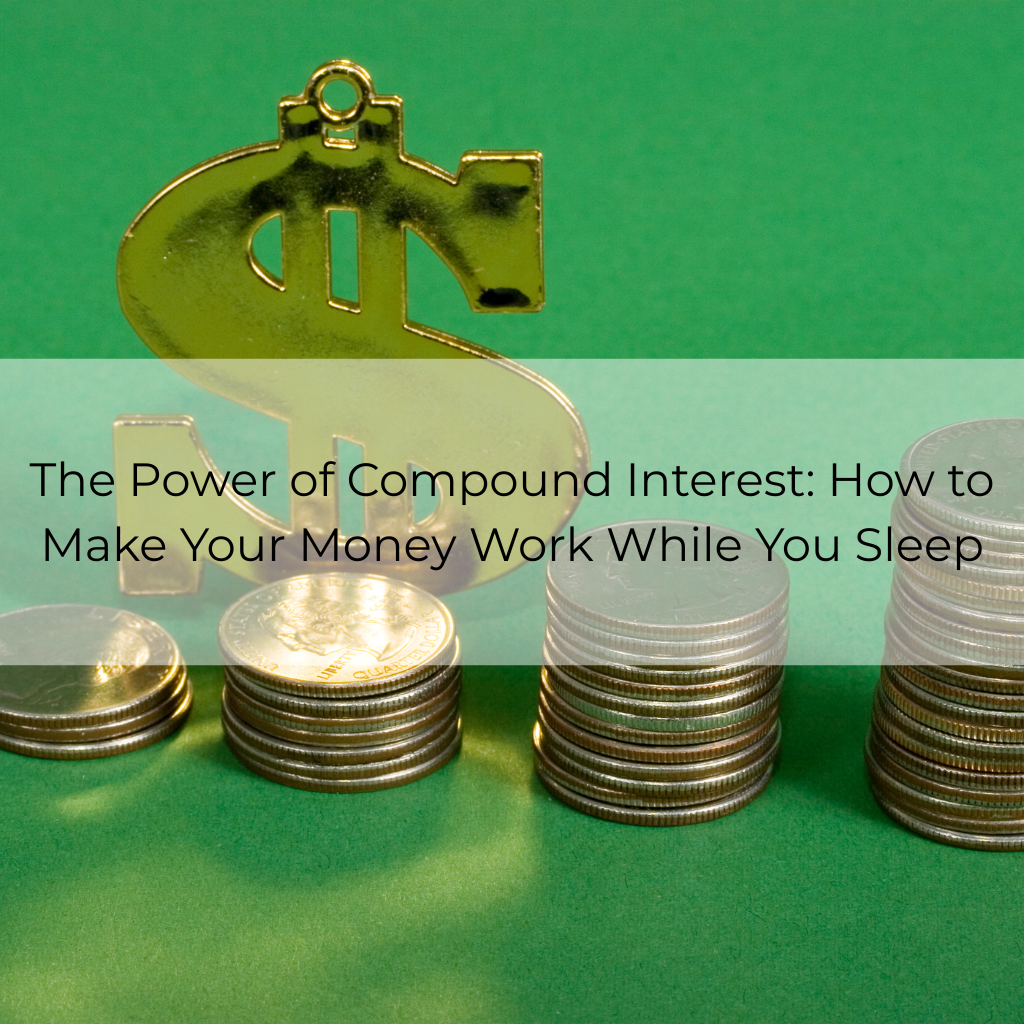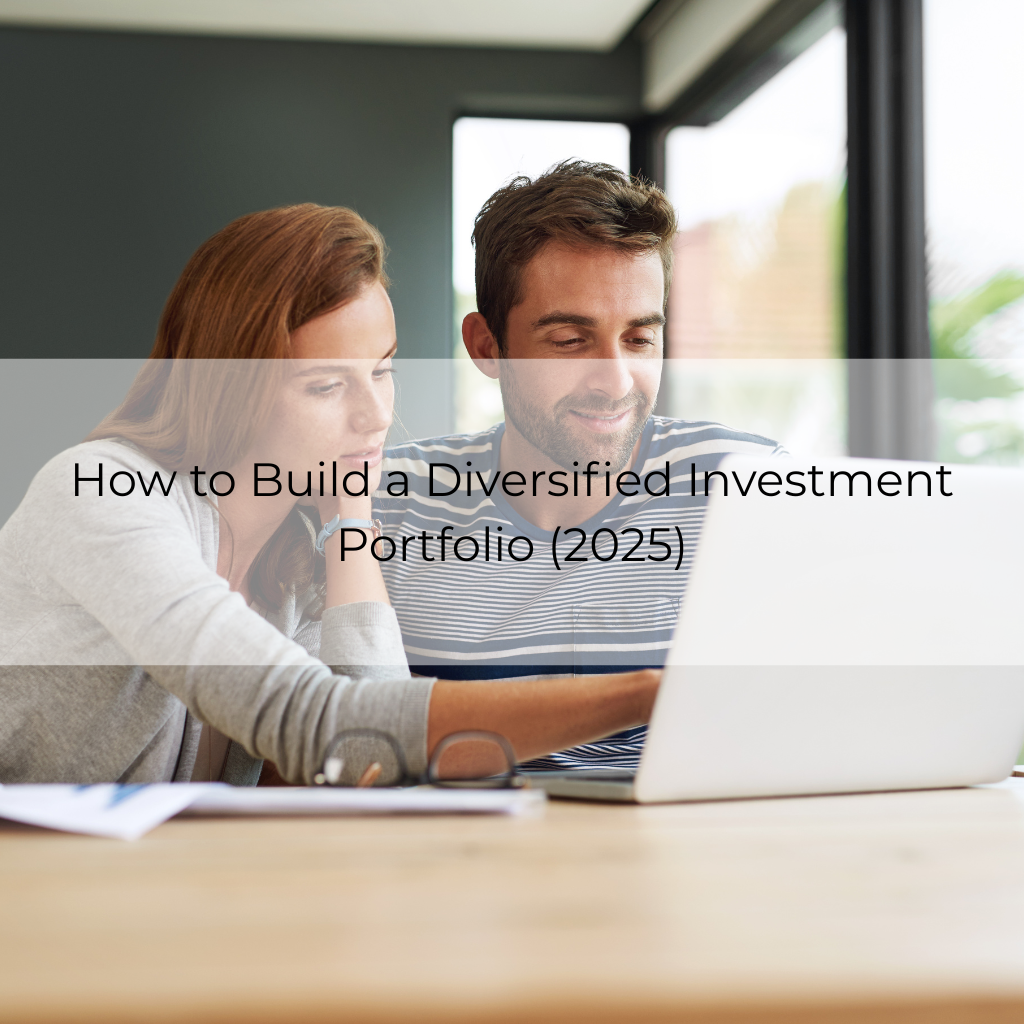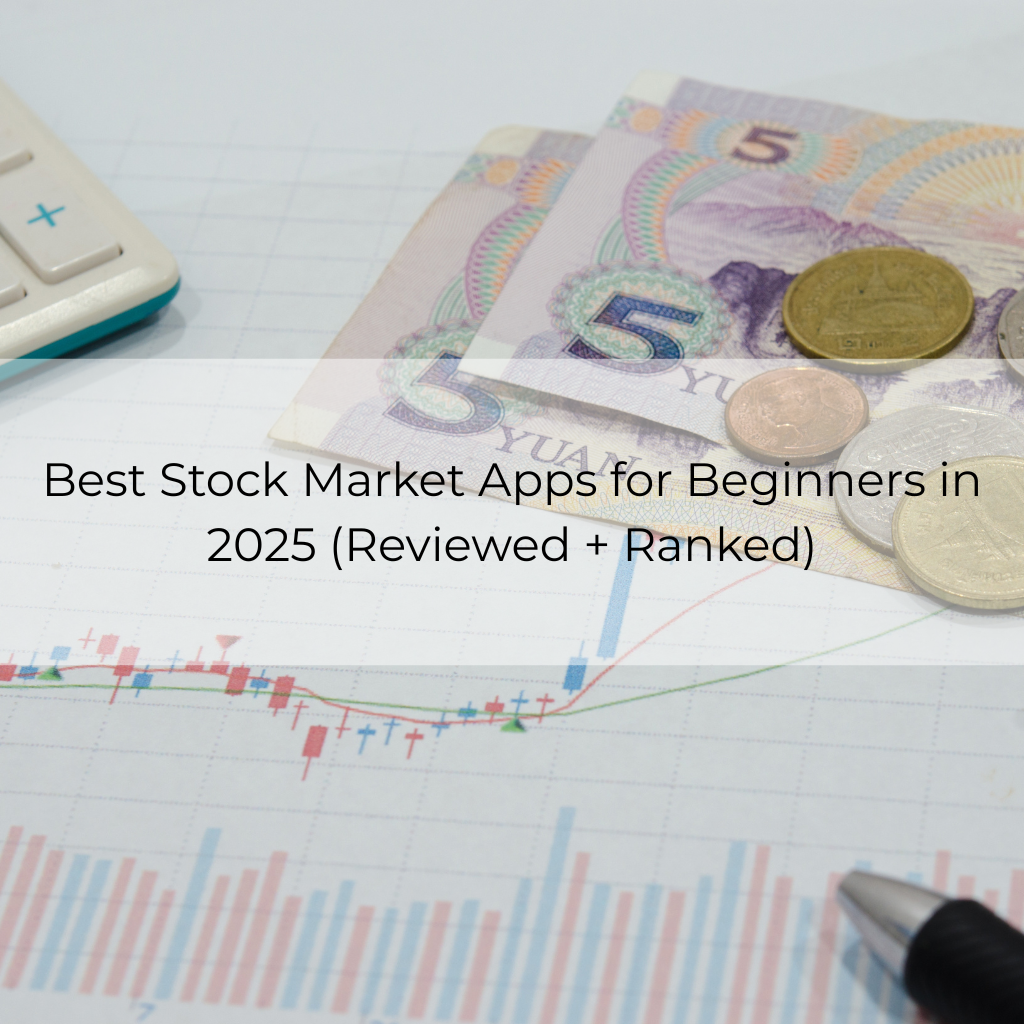The Power of Compound Interest: How to Make Your Money Work While You Sleep

Albert Einstein allegedly called compound interest “the eighth wonder of the world.” Whether or not he actually said it doesn’t matter—what matters is that it’s one of the most powerful forces in personal finance, and most people have no clue how to use it.
The average person grinds 9 to 5, trying to save what’s left over each month. The smart ones? Their money works harder than they do. That’s the difference compound interest makes. It’s not magic, it’s math—and it’s how wealth builds while you’re doing absolutely nothing.
This isn’t a theory lesson. It’s a practical strategy. Compound interest is how the wealthy win consistently—because once it kicks in, the results scale fast. Whether you’re saving for a home, planning for early retirement, or just tired of living paycheck to paycheck, understanding this concept can completely change your financial trajectory.
By the end of this article, you’ll know exactly what compound interest is, how to harness it, and why the earlier you start, the bigger your payoff. Let’s get into it.
How to Build a Diversified Investment Portfolio (2025)
1. What is Compound Interest? (Without the Math Jargon)
At its core, compound interest is the process of earning interest on your interest. It’s not just your money growing—it’s your growth growing.
Let’s break it down simply:
Imagine you invest $1,000 at an interest rate of 10%. After the first year, you earn $100. In the second year, you earn interest on $1,100 instead of just the original $1,000. That extra $10 may seem small, but over time, that compounding effect begins to snowball.
Simple Interest vs. Compound Interest — Side by Side
| Simple Interest | Compound Interest | |
|---|---|---|
| You earn interest on | The original amount only | The original amount plus past interest |
| Growth | Linear | Exponential |
| Example (10% on $1,000 over 3 years) | $300 total interest | $331 total interest |
With simple interest, growth is steady but limited.
With compound interest, growth accelerates as time goes on—because each year builds on all the years before it.
Think of It Like a Snowball
Compound interest is like rolling a snowball down a hill.
At first, it barely grows. But the longer it rolls, the bigger it gets—because it picks up more snow (interest) with every turn. The longer it rolls, the faster and bigger it becomes.
Another way to think of it:
Compound interest is a loyalty program for your money. The longer you keep your money invested, the more it rewards you—not just for what you started with, but for sticking around.
The Compound Interest Formula (And How to Actually Use It)
The compound interest formula looks complicated at first glance:
A = P(1 + r/n)ⁿᵗ
But let’s simplify it.
- A = the amount of money you’ll have in the future
- P = the principal (your starting amount)
- r = the annual interest rate (in decimal form)
- n = number of times interest is compounded per year
- t = number of years
This formula helps you predict how much your money will grow over time, including both your initial investment and the interest it earns along the way.
Example 1: One-Time Investment
Let’s say you invest $1,000 at a 7% annual return, compounded yearly, for 30 years.
Using the formula:
A = 1,000(1 + 0.07/1)^(1×30) = 1,000(1.07)^30 ≈ $7,612.26
That’s more than 7x your original investment—without adding another dollar. That’s the power of time + compounding.
Example 2: Monthly Investing
Now let’s say instead of a lump sum, you invest $200 every month for 30 years at the same 7% annual return. This time, we’re compounding monthly.
By the end of 30 years, you’ll have about $243,000—even though you only contributed $72,000 out of pocket.
That’s compound interest + consistency working in your favor.
Visualizing the Growth
The chart above shows the difference clearly:
- A one-time $1,000 investment grows steadily and ends strong
- Monthly investing grows slower at first, but compounds massively over time
This is why starting early matters, and why consistency beats guessing. You don’t need a windfall. You just need time and discipline.
Real-Life Scenarios Where Compound Interest Wins
Compound interest isn’t just a numbers game on a spreadsheet — it’s the engine behind some of the most important financial milestones people aim for. Whether you’re saving for something five years out or 30, compound growth works behind the scenes, building wealth slowly and silently.
Let’s look at how this plays out in real life.
Saving for a Home
Let’s say you want to buy a home in 10 years. You commit to investing $300 a month at a 7% annual return.
At the end of that decade, you’re looking at roughly $51,000 — more than $15,000 of which comes from interest alone. That’s a serious head start on your down payment, just by being consistent.
Building a Travel Fund
You don’t need to be wealthy to travel — just smart. Put away $150/month into a basic index fund for five years at 7% interest and you’re looking at over $10,500. That’s enough for multiple international trips without touching your savings account.
Retirement (Even If You Start Late)
Someone in their 30s might think they’re “behind.” But if you start investing $500/month at 35 and keep going until 65, you’ll have nearly $600,000 assuming a 7% return. Start at 25 instead? That total pushes past $1.2 million — double the result for starting just 10 years earlier.
That’s not because you saved twice as much. It’s because time doubled the compounding effect.
Helping Fund a Child’s Education
Open an account when your child is born and contribute $250/month until they’re 18. At 7%, that could grow into over $100,000 — a solid start for college without student loans.
Just Getting Ahead
Maybe your goal isn’t a specific event — you just want to build a financial cushion. Even if you only invest $100/month, over 25 years at 7%, you’ll end up with around $80,000. That’s money you didn’t have to work extra shifts to earn. It grew while you lived your life.
Compound interest isn’t about luck or wealth — it’s about habits + time.
It works for people with modest income just as well as it does for high earners. The secret is starting, sticking with it, and letting the math do the heavy lifting.
Best Stock Market Apps for Beginners in 2025 (Reviewed + Ranked)
Why Starting Early Is the Real Cheat Code
The sooner you start investing, the less money you have to invest.
That’s not a motivational quote — that’s how the math works.
Time is the one variable in compound interest you can’t replace. You can always increase your income, change your investments, or adjust your risk. But you can’t go back and invest earlier. And that’s where early investors win — not because they saved more, but because they gave compounding more time to work.
The Classic Comparison: Starting at 20 vs. Starting at 30
Let’s compare two people:
- Person A invests $5,000 a year from age 20 to 30, then stops
- Person B invests $5,000 a year from age 30 to 60
Who ends up with more at age 60, assuming a 7% return?
- Person A (10 years of investing): ~$602,000
- Person B (30 years of investing): ~$540,000
Even though Person B invested three times more money, Person A comes out ahead—just by starting earlier. That’s compound interest rewarding time more than effort.
Why This Matters So Much
In your 20s, it feels like there’s always time to figure out money later. But that mindset costs people hundreds of thousands of dollars in lost compound growth.
Investing when you’re young isn’t about building wealth fast. It’s about giving your money the maximum amount of time to do the work for you.
Even small contributions matter. $100/month in your early 20s grows into six figures by retirement, even if you stop investing a decade later.
Bottom Line
The earlier you start, the less you need to invest.
The later you start, the more you’ll need to catch up.
If you’re still young, use that to your advantage.
If you’re starting late, don’t wait another year.
Where to Actually Start Investing (Compound-Friendly Vehicles)
Understanding compound interest is one thing. Putting it to work? That’s where most people stall. The truth is, not all financial products are designed for long-term compounding. You want tools that allow your gains to stay invested, minimize fees, and scale over time.
Here’s where to start.
Tax-Advantaged Accounts: Compound Without Penalties
Some of the best places to compound wealth are retirement and tax-free growth accounts. These accounts either defer taxes or eliminate them completely, allowing compounding to work without friction.
- Roth IRA – Contributions grow tax-free and withdrawals in retirement are tax-free. Perfect for long-term compounding.
- Traditional IRA / 401(k) – Pre-tax contributions reduce your taxable income now, and grow tax-deferred.
- HSA (Health Savings Account) – Triple tax benefit: pre-tax contributions, tax-free growth, and tax-free withdrawals for medical expenses.
Why this matters: Taxes are one of compounding’s worst enemies. These accounts eliminate that drag.
Index Funds and ETFs: Set It and Let It Grow
These are the go-to investment vehicles for most long-term investors.
- Index Funds (e.g., tracking the S&P 500) offer exposure to hundreds of companies with built-in diversification.
- ETFs (Exchange-Traded Funds) function similarly but can be traded throughout the day.
Why they work:
- Low fees (compared to mutual funds or active management)
- Reliable historical performance
- Ideal for long-term compounding when held and not traded
Dividend Stocks and DRIPs
Dividend-paying stocks give you regular income. But when you reinvest those dividends using a DRIP (Dividend Reinvestment Plan), that money buys more shares—leading to faster compounding.
- Reinvesting dividends turns income into more ownership
- More ownership = more future dividends
- The cycle feeds itself over time
This is how long-term investors build significant wealth without ever “adding” more money themselves.
Robo-Advisors and Auto-Investing Apps
If you don’t want to build a portfolio yourself, let tech do the heavy lifting.
Platforms like:
- Betterment
- Wealthfront
- M1 Finance
…automatically invest, diversify, and rebalance your money. Most also reinvest dividends and optimize for tax efficiency.
This means compound interest works without you doing anything beyond setting it up.
What to Avoid
- Savings accounts: Most pay less than 1%—your money loses ground to inflation.
- High-fee mutual funds: Fees eat directly into your returns and compound against you.
- Speculative trading: Compounding only works when your money stays invested. Jumping in and out resets the clock every time.
The goal isn’t to chase big wins. It’s to let time do what time does best—multiply small wins into something massive. The right vehicle matters. But consistency inside that vehicle matters more.
The Enemies of Compound Growth (Nobody Talks About This)
Compound interest can do incredible things for your wealth. But it’s not bulletproof. In fact, the very things most people ignore or underestimate are what quietly erode years of potential gains.
If you’re not actively protecting your compounding engine, you’re losing money — even if the market’s doing well.
High Fees
This is one of the most underrated killers of long-term returns.
- A fund with a 1.5% annual fee might not sound like much.
- But over 30 years, that could cost you hundreds of thousands in lost gains compared to a fund with a 0.10% fee.
The difference is compounding in reverse — the fees are eating your earnings year after year. Always check the expense ratio of any fund you invest in.
Rule of thumb: Stay below 0.25% for passive investing.
Taxes on Gains
Every time you sell a winning investment, you trigger a capital gains tax. That’s money you can’t reinvest — and it slows your compounding momentum.
The fix:
- Use tax-advantaged accounts like IRAs, 401(k)s, and HSAs.
- Avoid frequent trading in taxable accounts.
- Hold assets long-term to qualify for lower long-term capital gains rates.
Inflation
Inflation quietly reduces the real value of your money over time. If you’re earning 3% annually and inflation is 4%, you’re actually losing purchasing power.
Even in low inflation periods, your savings account likely isn’t keeping up.
The solution:
- Invest in assets that historically outpace inflation (stocks, real estate, certain commodities)
- Avoid parking long-term money in low-yield savings or CDs
Pulling Money Out Too Early
Compounding is slow at first and powerful later. If you pull your money out halfway through, you miss the entire upside curve.
This mistake is common with:
- Emergency withdrawals
- Panic selling during downturns
- “I’ll just take a little” mindset
Protect your principal and let it sit. Time is the fuel for compound growth — don’t cut the engine early.
Trying to Time the Market
Jumping in and out of the market sounds smart. It’s not.
Missing just a few of the market’s best days can destroy your long-term returns. And no one knows when those best days will happen.
The data is clear: the people who stay invested and stay consistent win. Timing the market is gambling. Letting compound interest do its job is strategy.
Compound Interest is Powerful — But Not Automatic
You don’t just need the right investments.
You need to protect your gains, minimize friction, and avoid the traps most investors fall into.
Stock Market vs. Real Estate: Which is the Better Investment?
It’s not exciting. But it’s effective. And in the long run, it’s how you separate luck from wealth.
The Psychology of Compound Interest: Why It Feels Boring at First
If you’ve ever started investing and thought, “That’s it?”, you’re not alone.
Compound interest works slowly at first. It can feel frustrating, underwhelming, and even pointless in the early stages. That’s not a bug—it’s the design.
Why It Starts Slow (And That’s Okay)
In the beginning, your money grows in inches, not leaps. You might invest for two or three years and only see modest gains. It’s easy to wonder if it’s even worth it.
But what you’re doing in those early years isn’t just growing money—you’re building the foundation for exponential growth. Most of the real compounding happens in the later years.
Here’s the truth:
The first 10 years are about discipline.
The next 10 are about momentum.
The final 10 are about results.
Why Most People Quit Too Soon
- The gains look too small
- It feels like nothing’s happening
- There’s always a more exciting opportunity being hyped somewhere else
- Social media convinces you you’re behind if you’re not doubling your money in a year
This is where most people pull their money, change strategies, or chase something new—and they lose the very thing compound interest needed to work: time.
How to Stay Consistent When It Feels Pointless
1. Automate Everything
Set up auto-investing. Remove yourself from the equation. No decisions. No hesitation. Just progress.
2. Track Annually, Not Daily
Looking at your portfolio every day is like watching grass grow. Zoom out. Check in quarterly or yearly to see real progress.
3. Visualize the Long-Term Impact
Use compound interest calculators to project your future balance. Seeing the end goal helps reinforce the process.
4. Celebrate Milestones, Not Returns
Focus on consistency, not outcomes. Hitting your 12th consecutive monthly investment? That’s a win—even if the market’s flat.
Compound Interest Rewards the Patient, Not the Clever
Most wealth isn’t built by people who find the perfect investment. It’s built by people who stick with a good one long enough to let it work.
That’s the uncomfortable part of compound growth: the magic happens later.
And later only shows up for those who don’t quit too early.
How to Start Investing with $100: A Beginner’s Guide to Building Wealth from Day One
DIY vs Tools: How to Track Your Growth
Compound interest doesn’t ask for daily attention, but it does deserve periodic check-ins. You don’t need to obsess over every market move—you just need to make sure your strategy is working and your money is doing what you intended.
Whether you like hands-on spreadsheets or set-it-and-forget-it platforms, here’s how to stay on top of your compounding journey.
DIY Spreadsheet Tracking
For the numbers-driven investor who wants full control, a custom spreadsheet is a powerful tool. With a bit of setup, you can:
- Track contributions, balances, and timeframes
- Calculate compound growth over time
- Forecast future balances using simple formulas
- Add notes on deposits, strategy changes, or market events
It’s not flashy, but it gives you clarity. And for many, that’s worth the time.
Tip: Use Google Sheets and set up basic compound interest formulas to project growth with your actual numbers.
Automated Tools & Dashboards
If you’re less into manual updates, there are plenty of platforms that track your portfolio for you, often across multiple accounts.
Here are some of the best:
Personal Capital (now Empower)
- Connect all your investment and bank accounts
- Real-time net worth tracking
- Asset allocation, performance, and fee analysis
- Retirement planning tools
M1 Finance
- Auto-invest and rebalance based on target “pies”
- Built-in dividend reinvestment
- Visual portfolio tracking with growth charts
Betterment / Wealthfront
- Robo-advisors with automated investing
- Passive growth tracking, tax-loss harvesting
- Great for long-term compounding with zero micromanagement
Compound Interest Calculators
Even if you’re not ready to invest yet, use calculators to visualize what could happen.
They’re fast, free, and incredibly effective for building long-term motivation. Just plug in:
- Starting amount
- Monthly contribution
- Expected return
- Timeframe
…and see how time + discipline transforms modest inputs into major results.
Try:
- Investor.gov’s Compound Interest Calculator
- NerdWallet’s Investment Calculator
- Bankrate’s Retirement Planner
Don’t Let “Tracking” Turn Into Overthinking
You don’t need to check your portfolio daily. In fact, you shouldn’t.
Pick a rhythm—monthly, quarterly, or even yearly—and stick to it. The real benefit of tracking is seeing the momentum build slowly, then suddenly. That’s when compounding becomes real.
How to Make Money While You Sleep
If you take nothing else away from this article, remember this:
Compound interest is how you build wealth without working harder—by making time, consistency, and discipline work for you.
Here’s the playbook:
- Start early. Time is your greatest multiplier. The longer your money compounds, the more powerful it becomes.
- Stay consistent. Small, regular contributions beat sporadic big ones. The habit matters more than the amount.
- Reinvest everything. Let your gains generate more gains. Avoid pulling money out unless you absolutely have to.
- Minimize friction. Watch out for fees, taxes, and inflation. Use tax-advantaged accounts and low-cost investments.
- Track without obsessing. Use tools or simple spreadsheets to stay on course, but don’t micromanage. Compounding takes time.
- Let it ride. Don’t try to outsmart the market. Time in the market beats timing the market—always.
You don’t need to be rich to make this work. You don’t need to be an expert. You just need to start, stay the course, and let the math do the heavy lifting.
Compound interest rewards the patient—not the perfect. And the best time to start is now.
SEO Disruptor | Paid Ads Architect | Content Alchemist | I don’t just rank pages
I build profit machines. From SEO domination to ads that print revenue, I turn digital noise into real-world business growth. Let’s connect




